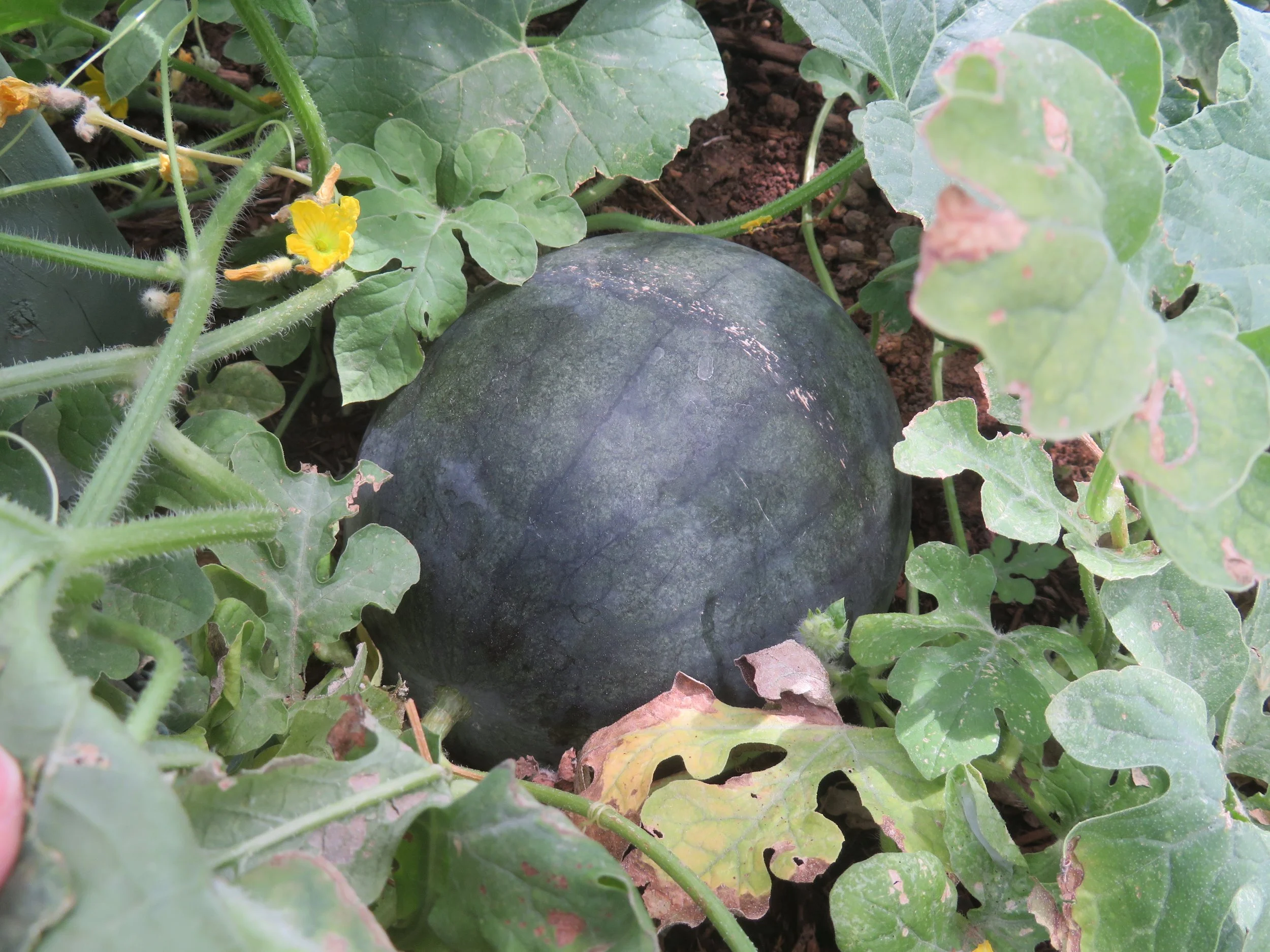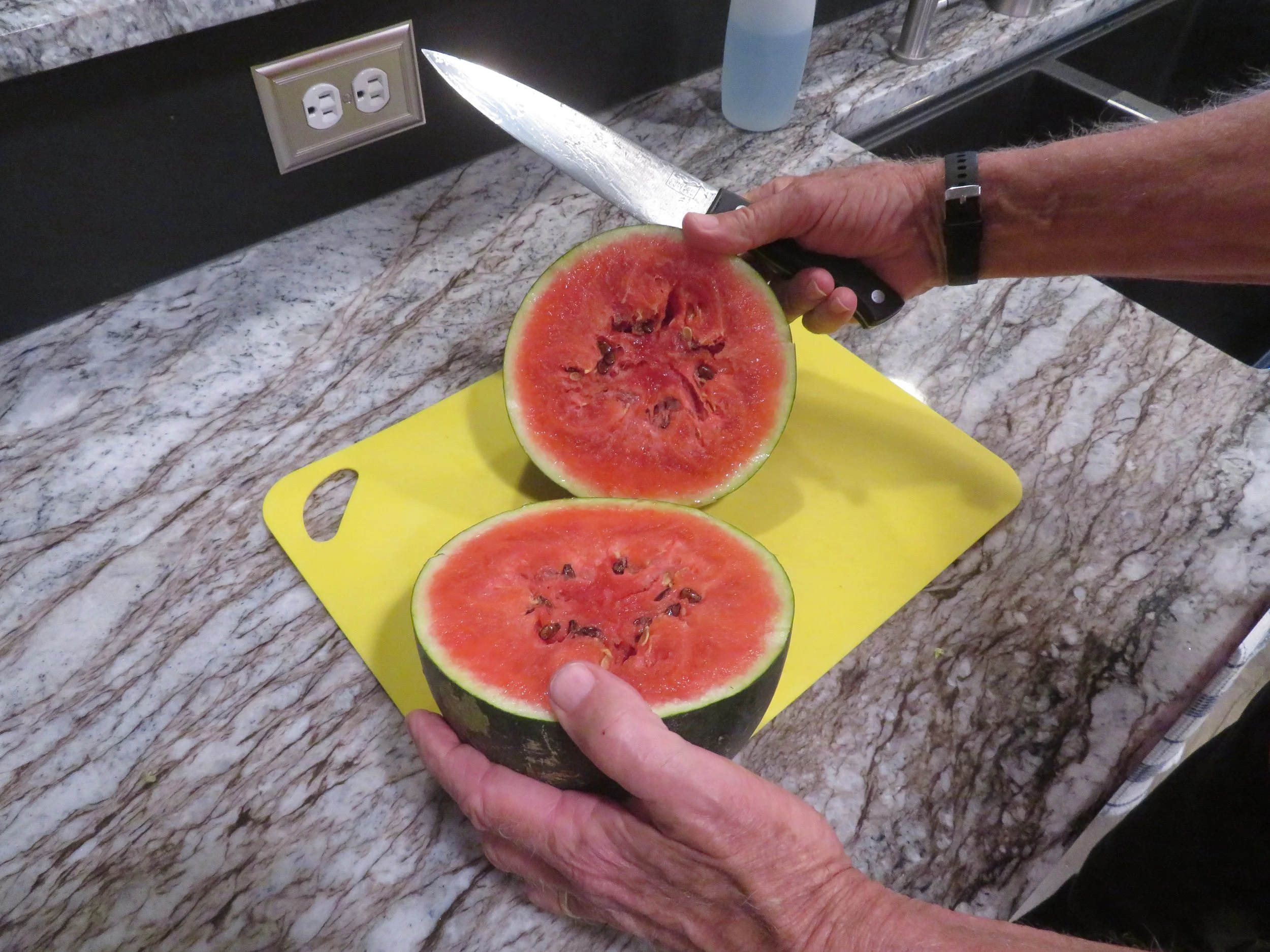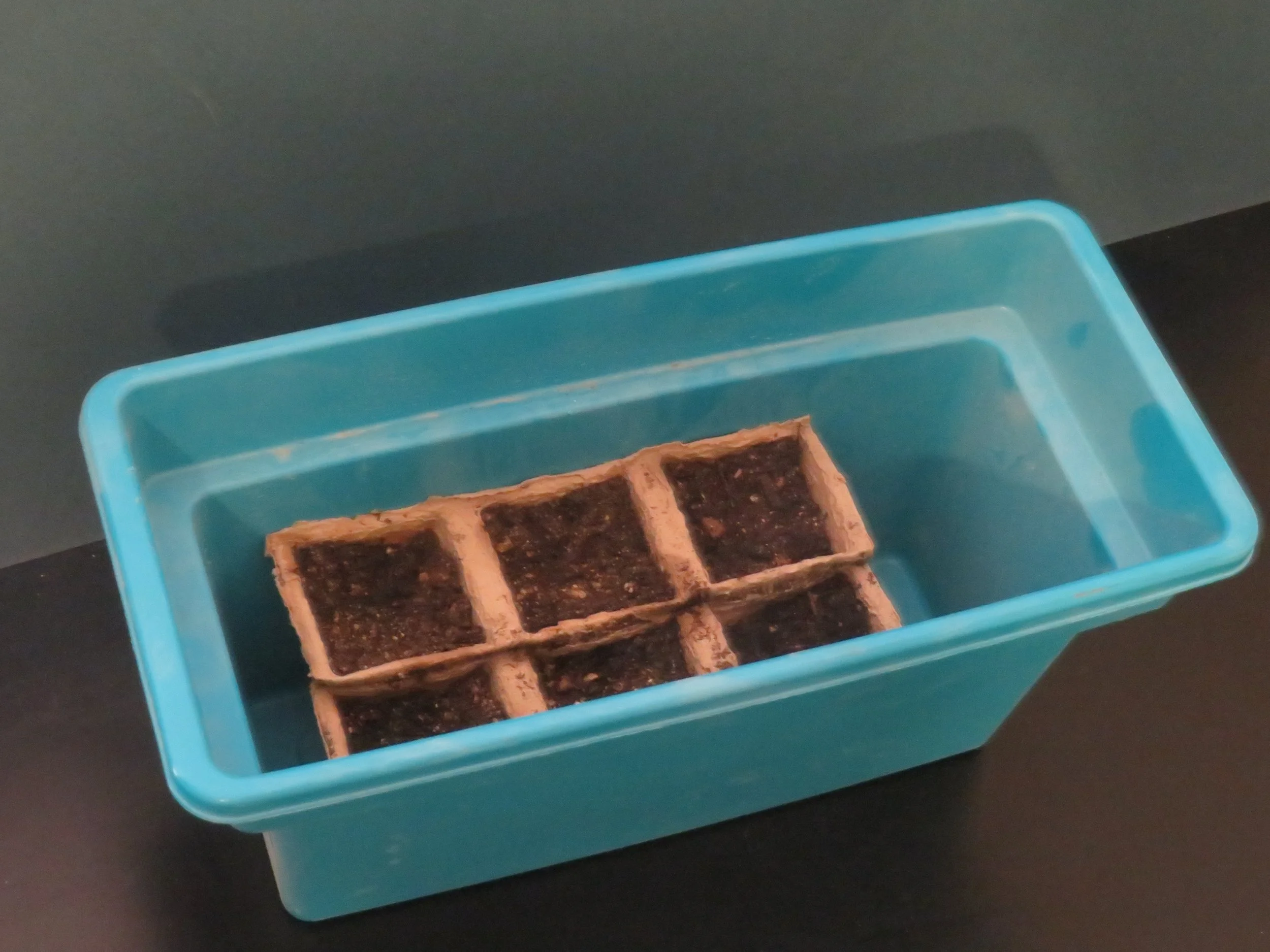The Wonders of Watermelon
/I love all the fresh fruit that’s available in the summer, especially watermelon. I can’t think of a more refreshing treat on a hot summer’s day than chunks of cold, juicy watermelon that burst with luscious, sweet flavor as soon as they hit your tongue. I figured if I liked it that much and it tasted that good, there was likely a problem with it... like too much sugar, causes heart or lung disease or cancer, or a myriad of other issues. Nope, my research indicates it’s not only delicious, it’s good for you.
This low-calorie hydrating fruit (~92% water content) supplies not only vitamins A and C but antioxidants that purportedly reduce the risk for heart disease, cancer, and accelerated aging. It’s also beneficial for kidney health since it’s a natural diuretic and can potentially help improve heart health and hypertension by relaxing blood vessels.
Another added benefit? According to WebMD, watermelon can help improve workouts at the health club or gym because its high potassium content works to reduce muscle cramping and soreness. Who knew? Plus, there’s that hydrating effect once again.
Watermelon’s anti-inflammatory properties help reduce joint pain and inflammation associated with arthritis, and its hydrating properties and potassium help promote healthy bones and overall joint health… especially important for us aging boomers. Watermelon is a staple in anti-inflammatory diets (comparable to the Mediterranean diet), which minimize processed foods and added sugars as well as saturated and trans fats like red meat, sugary drinks, snack foods, convenience foods, and fast foods while encouraging fatty fish, fresh fruits and veggies, nuts, seeds, and whole grains.
With nothing in mind but homegrown fruit from the garden, David planted Sugar Baby watermelons in our raised planter garden this past Spring. We watched as the watermelon vines grew, spread, and flowered. We were excited when tiny fruit appeared. We watched the fruit religiously, checking daily and whispering words of encouragement, cheering on its growth.
We watched the fruit religiously, checking daily and whispering words of encouragement, cheering on its growth.
As we waited for our melons to mature, we took advantage of local supermarket deals and purchased fresh watermelons whenever they were on sale. $2.99-$3.99 for mini or personal size melons was pretty much standard throughout the summer. “Personal size”, seedless melons weighing about 3-7 pounds filled 3-4 one-quart containers when cut up. We indulged regularly and with gusto. There was a container of fresh-cut, chilled watermelon on our table most every meal.
As we noshed on the store-bought fruit, our watermelons (3 of them now) matured. We couldn’t wait to pick them. We checked the internet for signs of when to pick a ripe melon: Knock on the melon to make sure it sounds hollow; look for a change in color on the underside (green to yellow) and check that the tendril near the stem is dried up. Check, check, check. We finally picked one.
Yuck! We either waited too long and the melons were overripe or we chose the wrong variety of melons for our desert climate (though David had researched varieties in advance). Lots of seeds (which we expected since it wasn’t a seedless variety), mealy and mushy on the inside, no flavor. What a disappointment!
Mealy, mushy and flavorless!
David managed to save a couple of seeds from several of the ‘seedless’ watermelons we bought over the past few months. Evidently, ‘seedless’ varieties do indeed have seeds. Usually they’re undeveloped and white, but some have one or two developed black seeds that could possibly produce fruit. He figures he’ll give it a try. Nothing to lose.
David managed to save a couple of developed black seeds from store-bought ‘seedless’ watermelons. We’ll see if they germinate and produce any fruit.
Darn! We totally missed National Watermelon Day on August 3, but there’s always next year!









